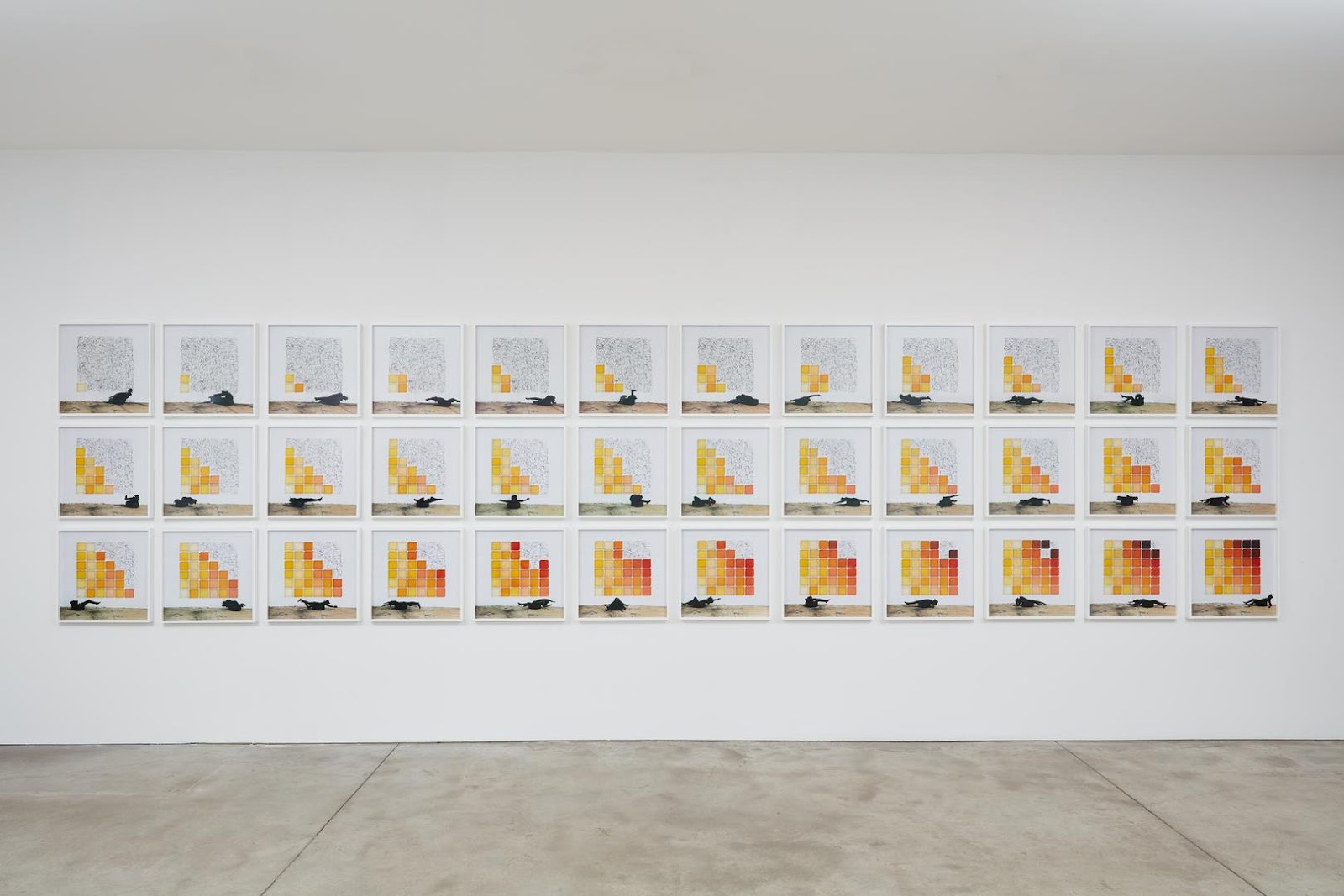The Geometry of Colour is a body of works created by artist Robin Rhode. These works are cooperative visual and performance art, documented through c-print photographs, taken at a wall in Johannesburg.
In one work, Under the Sun, Rhode produced images of the pixelated sun’s rays for both the political and atmospheric climates that the regions share across 36 photographs. His sun rays join the long representational history of the sun, both as a benevolent father figure and as a symbol of victory and might, throughout monotheistic religions. The rays also revisit the theme of light as a sociopolitical issue—the expansion of the electrical grid to serve black townships was an early achievement of the African National Congress under Nelson Mandela.
I appreciate the form of Under the Sun and Rhode’s ideas on the metaphor of the sun rays. However, many of his thoughts come to me from the statement, not the work itself. In the exhibition, some of his works show the beauty of geometries and documents of his excellent performance. However, it is hard for audiences to associate geometries with sociopolitical issues. Because geometries in artworks are more like unemotional expressions, it is too abstract to related spectrum to the metaphor of sun rays in history. To think personally, the document of his performance is a second pass which will lose a strong and dynamic expression. The original work should be more impactful on the concept.

In one work, Under the Sun, Rhode produced images of the pixelated sun’s rays for both the political and atmospheric climates that the regions share across 36 photographs. His sun rays join the long representational history of the sun, both as a benevolent father figure and as a symbol of victory and might, throughout monotheistic religions. The rays also revisit the theme of light as a sociopolitical issue—the expansion of the electrical grid to serve black townships was an early achievement of the African National Congress under Nelson Mandela.
I appreciate the form of Under the Sun and Rhode’s ideas on the metaphor of the sun rays. However, many of his thoughts come to me from the statement, not the work itself. In the exhibition, some of his works show the beauty of geometries and documents of his excellent performance. However, it is hard for audiences to associate geometries with sociopolitical issues. Because geometries in artworks are more like unemotional expressions, it is too abstract to related spectrum to the metaphor of sun rays in history. To think personally, the document of his performance is a second pass which will lose a strong and dynamic expression. The original work should be more impactful on the concept.